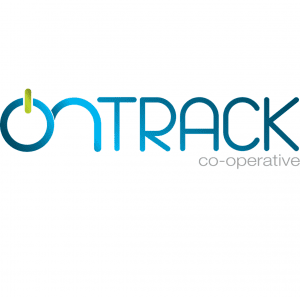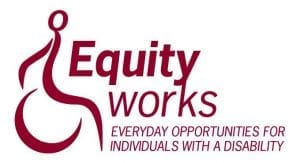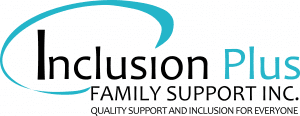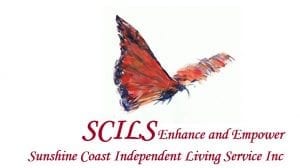By Natalie Alexander, as told by Tracy Sharp and Paul Martin (July 2015)
Small community organisations are currently facing increasing pressure to remain viable under the threat of a rapidly changing sector.
The stressors are evident for community workers who provide services to the most vulnerable citizens in our community. Disability services in particular are preparing for major changes to the way services are to be provided with the roll out of the National Disability Insurance Scheme (NDIS).
The question is: how will small disability organisations remain viable in such a different environment?
The vision for community is becoming increasingly restricted with funding cuts and new demands, forcing community organisations to respond and adapt accordingly. This is often complex work, requiring the careful balance of striving for viability while holding steadfast the true values of community.
Long-standing members of five community organisations on the Sunshine Coast have demonstrated that working collaboratively to strengthen viability is key to overcoming the current challenges within the sector. They have established a formal cooperative, and the collaboration process demonstrated between the five organisations has sparked innovative planning and partnerships.
By committing to an authentic and creative process of collaboration, they are not just surviving but are now thriving.
The purpose of the co-op’s partnership was to better coordinate quality support for people with disability and their families and to prepare for the NDIS. The On Track Co-op partners include:
An intentional process to share and collaborate
The impetus for partnering together came about in 2012 when members of the organisations attended a workshop on community collaboration, presented by Eileen Hayward.
All five organisations made a collective decision to be intentional in the process of sharing and collaborating with one another.
Significantly, the organisations already had existing relationships with one another, which made it easier to start exploring the benefits of partnering together. Each organisation also had a long-standing involvement within community, collectively supporting over 700 people with disability and their families throughout the Sunshine Coast region. They were like-minded organisations with a clear focus on disability and community development. The inspiration drawn from Eileen Hayward’s workshop gained momentum and they began to meet regularly to pursue their collective vision to become more self-sufficient. The On Track Co-op was formed out of this process.
As each individual organisation was only small in size, there was a perceived threat that big providers might attempt to swallow them up. Rumours circulated that large multinationals may enter the disability market. While larger companies would indeed provide more choice for consumers, small community organisations were essential in playing a crucial role within their communities.
Although they may be small in size, many community organisations have the advantage of existing relationships with people because of their long-term history of providing services.
In order to remain viable and ensure quality of service, collaborating appeared to be a far more attractive and powerful alternative than seeking to go it alone and risk being taken over.
In the early days of this collaboration, establishing stability and aligning with the same vision and values was essential to the process. The journey of collaboration was a positive experience but also came with its fair share of challenges.
The real collaboration work is in doing it
It’s easy to talk about collaboration but the real work comes in doing it. It became imperative that the right mix of people worked together. This meant that developing personal relationships and fostering mutual values were essential to the success of collaboration.
The vision of the On Track Co-op was first and foremost about the people for whom the service was designed to support.
The Co-op was all about benefiting the people they supported by reinvesting profit back into the organisation.
The partnership was proving to be effective because there was a strong commitment to maintain authentic relationships with one another. These authentic relationships were strengthened by the shared values held between one another and by their ongoing dedication to keep collaborating.
The success of the Co-op came down to a personal and human level of interaction between one another. The necessary groundwork was invested at the board level to identify goals, strengths and barriers for progressing.
Such a process could not be rushed and so taking the time to come to consensus was of great importance. Time was a necessary priority in which each organisation endeavoured to listen to each other and give the attention and support required.
Co-op leads to exciting ideas
By coming together to form the Co-op, an array of exciting ideas were drafted and immediate advantages felt.
- Having five organisations represented on the Co-op allowed varying perspectives and ideas to be generated. Given that each organisation operated differently, there was much wisdom to be found in the cross section of the organisations represented; both among workers and families of people with disability. Their unique insights and perspectives built a strong collective voice. This demonstrated the power of partnerships, networks and collaboration.
- Another advantage of the collaboration between the organisations was the opportunity to improve viability by becoming more self-sufficient as a Co-op.
The challenge was to determine how to be self-sufficient by reducing overheads while not compromising on service delivery.
Improving viability required a strategic approach to collaboration. The Co-op was determined to take a charitable approach to helping the community regardless of cuts in government funding. Some of the innovative ideas included:
- new approaches to outsourcing finances
- providing internal training
- sharing staff across all five organisations, and seeking ways to bulk buy in order to lower the costs.
Strategic collaboration was all about finding smarter ways of doing business together. The process of improving viability also had a positive knock on effect within the community. As the Co-op reaped the benefits of cost savings, it also sought to reinvest back into the community, to benefit the community.
This collaboration project has had a ripple effect in the local sector: When united, like-minded organisations can prove to be strong and flexible. The Co-op has established its presence on the Nambour community. The five organisations are not floundering; individually they are small but together they are stronger and collectively making an impact.
The Co-op has been approached by other community organisations who have expressed a desire to become associated.
The message is a positive one: It doesn’t have to be a struggle for survival because in unity there is strength.
Part 2 continued next week: Servant leadership






